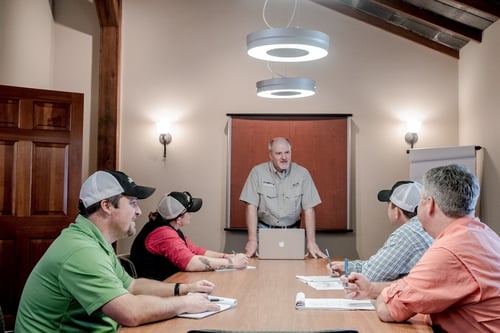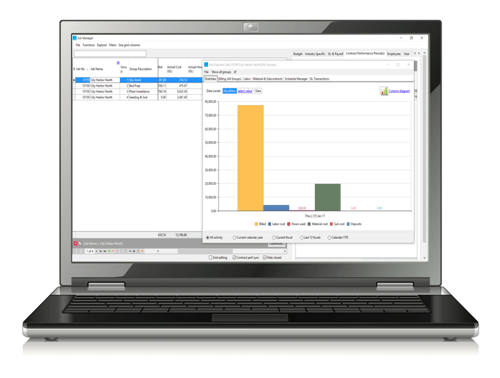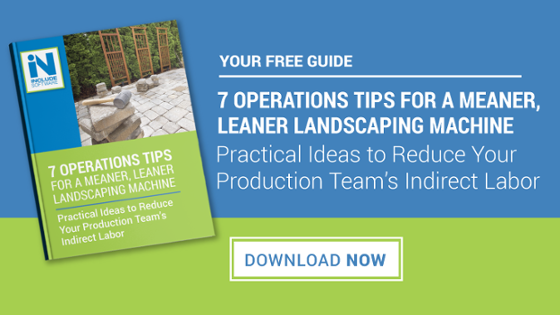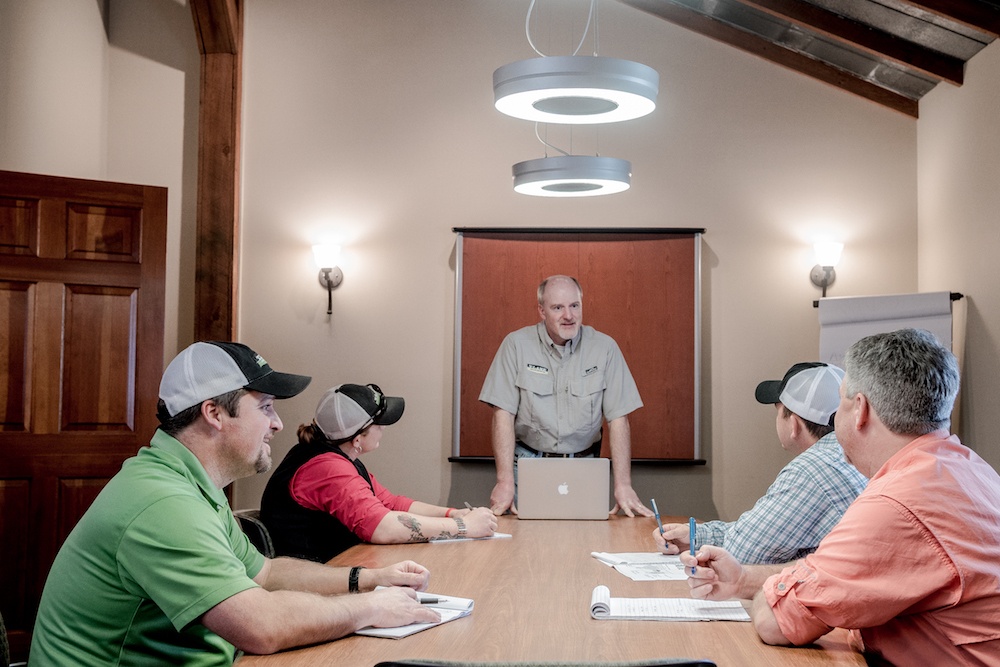 Do you ever wish you could predict the future? After all, planning for your company’s future when you have no idea what it holds is challenging. It can feel like quite a bit of pressure to make decisions that impact the future of your business (and its people) when you’re not sure what to base them on.
Do you ever wish you could predict the future? After all, planning for your company’s future when you have no idea what it holds is challenging. It can feel like quite a bit of pressure to make decisions that impact the future of your business (and its people) when you’re not sure what to base them on.
It’s certainly no different when it comes to the important decisions related to hiring landscaping employees. If you’re experiencing a labor shortage, then you know you need to hire more workers. But chances are, you don't know how many people you need and you’re not sure how to accurately figure it out.
The last thing that you want to do is hire a bunch of people, burn through the work and then have to lay them off. With an experience like that, you’d worry if they'd ever come back! But you also don’t want to keep employees on staff and struggle to find things for them to do.
If only you could develop some vital labor forecasting techniques that would help give you an idea of how many employees you really need.
Fortunately, there are steps you can take to get a better grasp on labor forecasting. There’s no reason to be making these decisions in the dark when there are tools available to help you.
Common Mistakes When Hiring Landscaping Employees
Hiring too many employees—or too few—is a common mistake made by landscaping companies. So where do things usually go awry? There are definitely a few scenarios that will make hiring mistakes more likely. Here are some that landscape business owners have shared with us.
Relying Too Heavily on H2-B
If you’re like a lot of landscape companies, then you might rely on the H2-B program to make up for labor shortages. But as has been painfully demonstrated in the last few years, when the promised workers fail to come through for many companies, you may be left in a pinch. That’s why you need a back-up plan to recruit landscaping employees. You must be careful not to make the H2-B program your primary source of workers and put yourself in a position where you’re going to be unable to complete jobs if something falls through.
Failing to Consider the Variables
In 2018, for example, the rain was a huge variable. We had so much rain that many landscape companies ended up with a serious backlog of work that they couldn’t keep up with. That lead to a lot of overtime which wasn’t accounted for and really hurt profits for some.
While there’s nothing that can be done to control the weather, you have to at least take that variable into account when making hiring decisions. Be prepared for tasks that your laborers can perform when they’re sitting around due to rain which will make you more efficient later (such as servicing vehicles and equipment). Have a plan and you’ll fare better when you’re faced with unwanted variables.
Not Staying on Top of Salespeople’s Promises
Another common mistake that we’ve seen impact hiring is when salespeople overpromise. Are promises being made that can’t be kept? It happens fairly often when landscape companies aren’t using any data to back up their decisions.
If your people are selling without any support from a tool such as labor forecasting software, then there’s a good chance they may be making dangerous guesses about just how much work can get finished. They don’t actually know if you have enough manpower to complete all the work they’ve sold in the time period in which they’ve sold it, and that can be a major problem that could leave you scrambling to find last-minute labor.
Making Educated Decisions Based on Data
 While it’s true that many of these circumstances are unpredictable, your best bet in making smart hiring decisions still comes down to data. If you’re not analyzing your sales data and using it to help you predict the future, then all you’re doing is guessing and that can go miserably wrong.
While it’s true that many of these circumstances are unpredictable, your best bet in making smart hiring decisions still comes down to data. If you’re not analyzing your sales data and using it to help you predict the future, then all you’re doing is guessing and that can go miserably wrong.
For instance, one of the best ways to know how much manpower you’ll need is to use labor forecasting software to take a look at your sales pipeline and get a strong sense of how much work is likely to actually come through. You should be looking at closing percentages as well as your opportunities to close. By looking at the work that has already been sold as well as the projected amount of additional work coming in, you can determine how many hours of labor you’ll need to get the work completed. Based on the time frame that the job was promised in, you can then forecast how many people you’re going to need to achieve those hours.
You should also use landscape business management software to look at your history. Look at what you did in sales last year and how many hours were used.
-
How many people did you hire and during which months?
-
How many people out of those hired did you retain?
-
How many hours were budgeted and how many were actually performed?
-
Are there recurring maintenance contracts that will renew and require the same hours this year?
-
Are any of our routes or scheduling changing? Do they need to?
The software will provide you with all of the data to answer these questions and make labor forecasting predictions for your future.
A Word on Employee Retention
In talking to landscape business owners, they often tell us that one of their biggest fears is losing key foremen and other leaders in their company during the offseason. Those who have been successful in retaining these key employees are those that are able to provide job security during traditional downtime.
 How exactly can you provide job security when there are no active landscape jobs?
How exactly can you provide job security when there are no active landscape jobs?
Obviously, if you’re a company that performs snow plowing then many of your employees will stay busy when it snows. But what if it’s not snowing? Or, what if you don’t offer snow services? How can you keep your people employed and performing jobs that still help your company?
The answer lies in forecasting other “winter projects” that you have planned ahead for within the company. While these will not have an immediate impact on profitability, landscape business owners tell us that they absolutely make an impact on efficiency, and that helps them in the long-term.
Some of the common winter tasks that landscape business owners tell us are beneficial to complete in the offseason include the following.
-
Cleaning the shop
-
Painting
-
Equipment and vehicle maintenance
-
Planning ahead with marketing efforts, sales strategies, and other “internal issues” such as scheduling and routing
Performing tasks like these during the offseason, rather than during the busy season, will allow you to focus solely on selling and getting jobs completed when the weather breaks. By planning ahead to keep your team members employed and busy, you’ll be able to do it in a way that doesn’t hurt your profitability but actually helps it in the long run.
However, planning ahead is key. If you try to scramble to come up with jobs for your team to do once winter has already rolled around, chances are you might not have enough work to keep everyone busy. Spend time brainstorming and developing a quality list of tasks that can be performed, an idea of how long they’ll take to do, and who you can assign them to. Like anything in business, it helps to be prepared.
Using Landscaping Labor Forecasting Software for Success
If you’re tired of taking your “best guess” in terms of how many employees you’ll need for an upcoming season, then it may be time for you to implement landscaping labor forecasting software. By doing so, you can start looking at hard data and making well-educated decisions for your future which landscape business owners tell us allows them to accurately determine the number of man-hours they’ll need for a season.
By making that investment and staying on top of your sales, you can feel confident that you’re setting yourself up for success for the next season—and for future years to come.
If you want to find out more about how landscaping labor forecasting software can help you make more accurate hiring decisions, let’s explore and see what Asset can do for you.
Watch this Video to Learn How Asset Can Make Operating a Landscape Business More Simple and Profitable
Image sources: T. Lake Environmental Design



